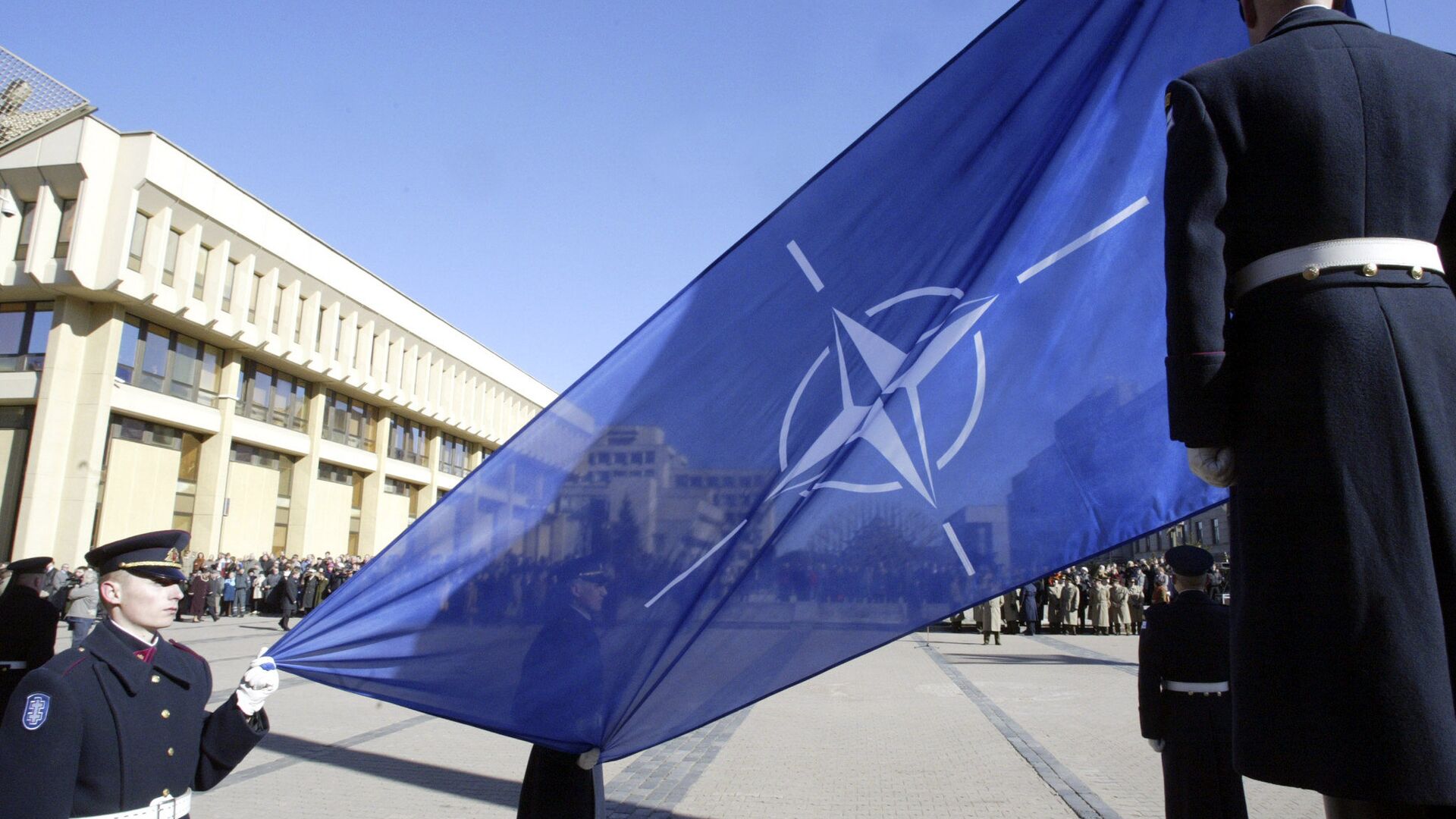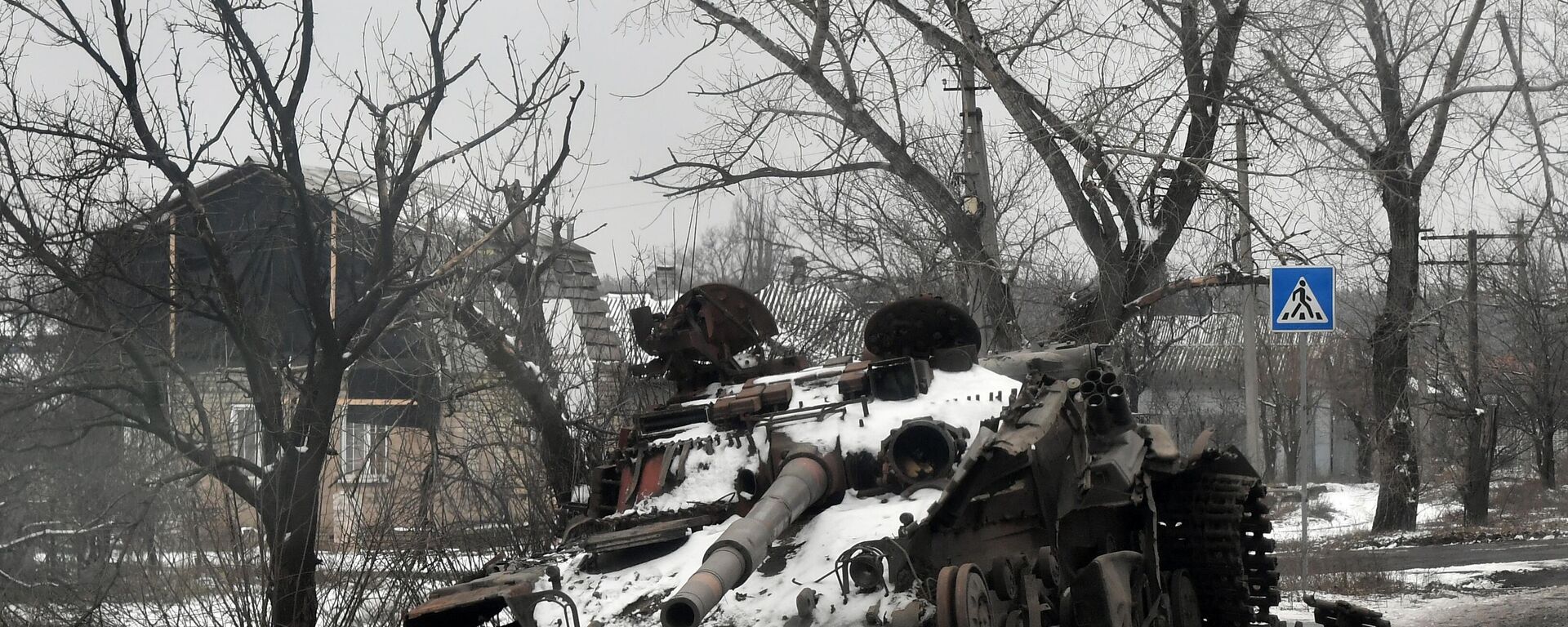https://sputnikglobe.com/20240211/nato-copies-russian-tactics-in-wake-of-ukraines-disastrous-counteroffensive-1116732702.html
NATO Copies Russian Tactics in Wake of Ukraine's Disastrous Counteroffensive
NATO Copies Russian Tactics in Wake of Ukraine's Disastrous Counteroffensive
Sputnik International
The US and its allies sent tens of billions worth of advanced military hardware to Kiev in preparation for a massive counteroffensive that was supposed to break Russia’s will to fight. Five months later, the now ex-commander of Ukraine’s military admitted that the operation had failed and that there would be no “deep and beautiful breakthrough.”
2024-02-11T19:05+0000
2024-02-11T19:05+0000
2024-02-11T19:08+0000
military
vladimir putin
military & intelligence
valery zaluzhny
russia
ukraine
nato
estonian defense league
center for strategic and international studies
https://cdn1.img.sputnikglobe.com/img/101668/22/1016682292_0:109:2049:1261_1920x0_80_0_0_1bbc20d1ebb7d671fe4f06ff846e88d1.jpg
Countries in NATO’s Eastern European flank have apparently been “taking notes” on Russia’s defensive strategy in the military operation zone after the blunting of Ukraine’s blood-soaked counteroffensive, showing interest in how the Russian military has revived the strategy of static defense into a key tool in modern warfare.“Our main lesson is that we need to find a way to stop the advance of Russian armored units,” Tiitus said, without elaborating on why Russia would bother placing “armored units” into a NATO country and potentially triggering World War III, something President Putin said recently he has absolutely no interest in doing.Defense officials in Estonia, whose border with Russia is just 338.6 km long, estimate that they need about 600 35-square-meter concrete bunkers, enough for about ten troops apiece, and fortified enough to survive being hit by artillery. Prototypes are in the offing, with construction expected to start in 2025 at a cost of about $65 million (which seems awfully low). If Latvia and Lithuania follow suit, they would need close to 3,900 bunkers of their own.The Center for Strategic and International Studies, a Washington, DC think tank, has characterized Russia’s defensive positions in the Donbass, Kherson and Zaporozhye as ‘the most extensive…in Europe since the Second World War’, rivaled only by the heavily militarized border between North and South Korea.The Economist characterizes the reevaluation in NATO strategy caused by Russia’s defensive strategy as a “dilemma” for the bloc, whose tradition going back to the 1950s has been based on a “more elastic defense in depth,” rather than an “operationally static defense” approach which the alliance’s eastern members are now exploring.The “rethink” comes after an unprecedented upset in Western conventional wisdom regarding its military capabilities and those of Russia. In 2023, Russia proved decisively that its military equipment, tactics and military-industrial base are no worse than NATO’s, destroying hundreds of modern Western military vehicles, tanks, and artillery systems, and prompting now-former Ukrainian Commander-in-Chief Valery Zaluzhny to complain that “NATO’s textbooks” proved unhelpful to his planning.
https://sputnikglobe.com/20240131/nato-is-instrument-of-confrontation-threat-to-russia---kremlin-1116512640.html
https://sputnikglobe.com/20240127/new-us-strategy-on-ukraine-will-de-emphasize-recovery-of-lost-territory--report-1116429704.html
russia
ukraine
Sputnik International
feedback@sputniknews.com
+74956456601
MIA „Rossiya Segodnya“
2024
News
en_EN
Sputnik International
feedback@sputniknews.com
+74956456601
MIA „Rossiya Segodnya“
Sputnik International
feedback@sputniknews.com
+74956456601
MIA „Rossiya Segodnya“
is nato copying russia, why is nato copying russia's tactics, nato, russia, ukraine static defense
is nato copying russia, why is nato copying russia's tactics, nato, russia, ukraine static defense
NATO Copies Russian Tactics in Wake of Ukraine's Disastrous Counteroffensive
19:05 GMT 11.02.2024 (Updated: 19:08 GMT 11.02.2024) The US and its allies sent tens of billions worth of advanced military hardware to Kiev in preparation for a massive counteroffensive that was supposed to break Russia’s will to fight. Five months later, the now ex-commander of Ukraine’s military admitted that the operation had failed and that there would be no “deep and beautiful breakthrough.”
Countries in NATO’s Eastern European flank have apparently been “taking notes” on Russia’s defensive strategy in the military operation zone after the blunting of Ukraine’s blood-soaked counteroffensive, showing interest in how the Russian military has revived the strategy of static defense into a key tool in modern warfare.
“Fortification measures have played a significant role in wars in our region in history,” Estonian defense official Susan Lillevali
told The Economist amid efforts by the Baltic States and Poland to build “anti-mobility defensive installations” near their frontiers with Russia and Belarus. Tallinn has been ‘studying’ the NATO-Russia proxy war in Ukraine for tips, Estonian Defense League Lieutenant-Colonel Kaido Tiitus confirmed.
“Our main lesson is that we need to find a way to stop the advance of Russian armored units,” Tiitus said, without elaborating on why Russia would bother placing “armored units” into a NATO country and potentially triggering World War III, something President Putin
said recently he has absolutely no interest in doing.
Defense officials in Estonia, whose border with Russia is just 338.6 km long, estimate that they need about 600 35-square-meter concrete bunkers, enough for about ten troops apiece, and fortified enough to survive being hit by artillery. Prototypes are in the offing, with construction expected to start in 2025 at a cost of about $65 million (which seems awfully low). If Latvia and Lithuania follow suit, they would need close to 3,900 bunkers of their own.
“The most important part is agreement with landowners,” Leiden University defense expert Lukas Milevski said, pointing out that much of the border region is owned privately, and suggesting that local residents could be “reassured” if the military promised not to store explosives or mines in the area.
The Center for Strategic and International Studies, a Washington, DC think tank, has characterized Russia’s defensive positions in the Donbass, Kherson and Zaporozhye as ‘the most extensive…in Europe since the Second World War’, rivaled only by the heavily militarized border between North and South Korea.
The Economist characterizes the reevaluation in NATO strategy caused by Russia’s defensive strategy as a “dilemma” for the bloc, whose tradition going back to the 1950s has been based on a “more elastic defense in depth,” rather than an “operationally static defense” approach which the alliance’s eastern members are now exploring.
The “rethink” comes after an unprecedented upset in Western conventional wisdom regarding its military capabilities and those of Russia. In 2023, Russia proved decisively that its military equipment, tactics and military-industrial base are no worse than NATO’s, destroying hundreds of modern Western military vehicles, tanks, and artillery systems, and prompting now-former Ukrainian Commander-in-Chief
Valery Zaluzhny to complain that “NATO’s textbooks” proved unhelpful to his planning.






